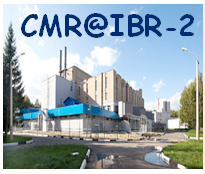Speaker
Dr
ION IONITA
(Institute of Nuclear Research, Pitesti, Romania)
Description
The 800 HT Incoloy is widely used in power generation for steam generators tubing and high temperature heat exchangers for gas cooled nuclear reactors and as a candidate material for fuel cladding in GEN IV reactors. The 304L steel has a high ductibility. Low yield stress and high tensile strength and is used widely in nuclear power plant.
There were manufactured 4 samples of Incoloy 800HTand 4 samples of 304L steel, all of 2x15x25mm dimensions and standing a heat treatment of 60 days at 450, 500, 550 and 600 degrees respectively.
The samples were investigated by neutron diffraction and small angle neutron scattering at the FSD, HRFD and MEREDIT diffractometers, YuMO-SANS and KFKI SANS spectrometers (in function at IBR-2 reactor, Dubna, respectively Budapest). Lattice cell and peak width parameters changes for both sample series (using neutron diffraction measurements) together with information on heat treatment effects concerning precipitate size and volume distribution of alloying elements (using SANS measurements) were found.
Structural properties of the above mentioned materials of significant importance in nuclear energy field, revealed through high temperature heat treatment are described.
Key words: neutron scattering techniques, neutron diffraction, SANS, , Incoloy 800 HT, 304L steel
Primary author
Dr
ION IONITA
(Institute of Nuclear Research, Pitesti, Romania)
Co-authors
Dr
Alexander Kuklin
(Joint Institute of Nuclear Research, Dubna, Russian Federation)
Mr
Bogdan Venescu
(Institute for Nuclear Research)
Mr
Dmitri Soloviov
(Joint Institute of Nuclear Research, Dubna, Russian Federation)
Dr
GYULA TOROK
(KFKI Budapest, Hungary)
Dr
Gizo Bokuchava
(Joint Institute of Nuclear Research, Dubna, Russian Federation)
Dr
MARIA BALASOIU
(Joint Institute of Nuclear Research, Dubna, Russian Federation, Horia Hulubei National Institute of Physics and Nuclear Engineering, Bucharest, Romania)
Dr
Manuela Fulger
(Institute for Nuclear Research Pitesti, Romania)
Dr
Premsl Beran
(NPI Rez, Czech Republic)

